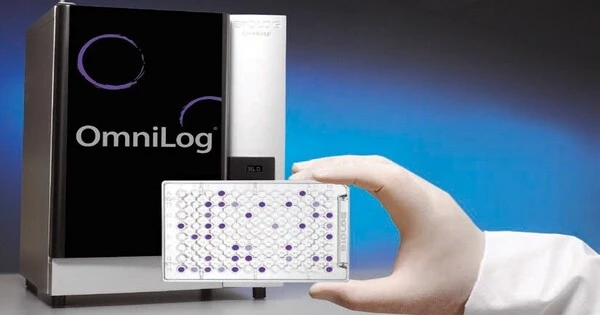Phenotype Microarray is a high-throughput technology used in microbiology and cellular biology to investigate the phenotypic properties of microorganisms or cells under various conditions. The phenotype microarray approach is a technique for high-throughput cell phenotyping. Multiple phenotypic traits, such as growth, metabolism, and responses to different environmental conditions, can be monitored at the same time using this technology.
A phenotype microarray system allows for high-throughput monitoring of the phenotypic response of cells to environmental challenges or exogenous compounds. End-point measurements or respiration kinetics, similar to growth curves, are used to record phenotypic reactions.
Here’s an overview of how Phenotype Microarray works:
- Microplates: The core of Phenotype Microarray is a microplate with an array of wells. Each well contains a different growth medium or a specific chemical or environmental condition.
- Microbial Cells or Cells of Interest: Inoculated into the wells are microbial cells or cells of interest. Typically, these cells are pre-treated or prepared to ensure a consistent starting point.
- Phenotypic Assays: The cells are subjected to various conditions and their responses are recorded. Growth rates, metabolic activities, sensitivity or resistance to specific substances (such as drugs or nutrients), and other relevant phenotypic traits can all be measured.
- Readout and Data Analysis: Typically, the outcomes are recorded using automated imaging systems or other detection methods. The generated data can be analyzed to learn how cells respond to various conditions.
Usages
High-throughput phenotypic testing is becoming increasingly important in understanding the biology of bacteria, fungi, yeasts, and animal cell lines like human cancer cells. Phenotype microarrays (PMs) allow researchers to quantitatively measure thousands of cellular phenotypes at the same time, just as DNA microarrays and proteomic technologies have done for thousands of genes or proteins.
The method could also be used to test gene function and improve genome annotation. In contrast to many of the previously available molecular high-throughput technologies, phenotypic testing is performed on living cells, providing comprehensive information about the performance of entire cells. The primary applications of PM technology are in systems biology, microbial cell physiology, microbiology, and taxonomy, and mammalian cell physiology, including clinical research on autism.
The advantages of PMs over standard growth curves are that cellular respiration can be measured in environments where cellular replication (growth) may not be possible, and it is more accurate than optical density, which can vary between different cellular morphologies. Furthermore, respiration reactions are typically detected much earlier than cellular growth.
















